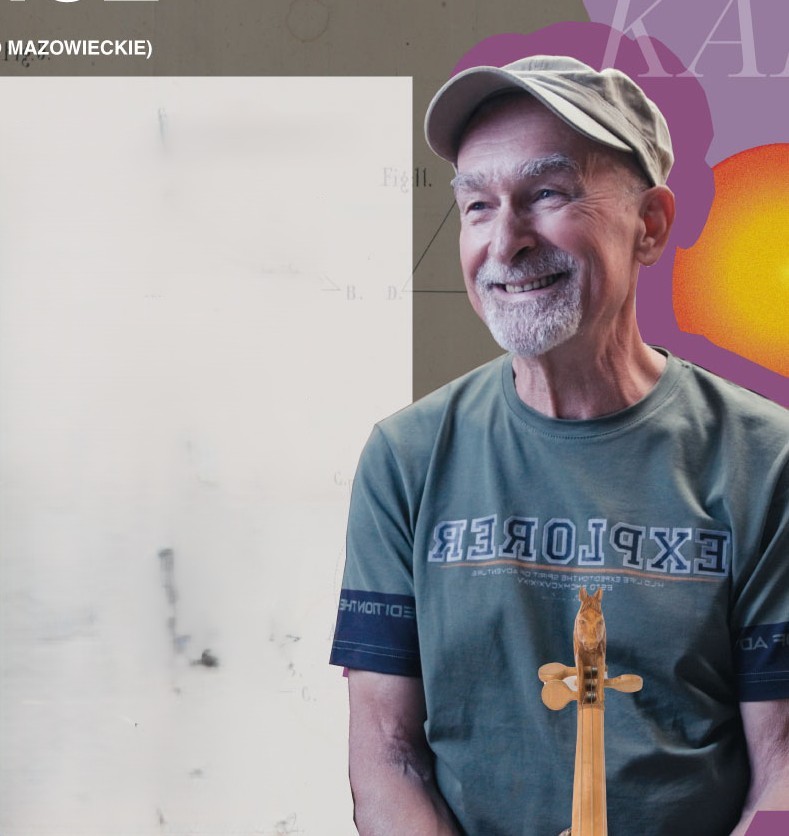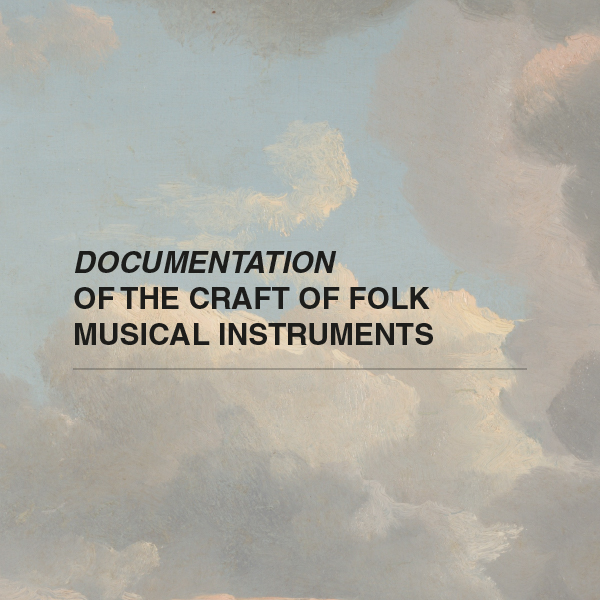This exhibition complements the project “Documentation and Archiving of the Achievements of Folk Artists and the Craft of Folk Musical Instruments,” implemented by the Museum of Folk Musical Instruments in Szydłowiec under the Ministry of Culture and National Heritage’s programme “Folk and Traditional Culture 2025.”
The project involved interviews with active makers of traditional instruments – award-winning and renowned masters of the craft who also continue local musical traditions. These encounters made it possible to record the entire process of instrument-making – from basic workshop techniques to the moment the instrument produces sound.
At the heart of the project are the makers themselves – guardians of tradition, teachers, and carriers of local identity. Their work is essential in transmitting knowledge, ensuring generational continuity, and fostering cultural awareness.
The exhibition invites visitors to discover traditional musical craftsmanship while also underscoring the importance of systematic documentation and protection of Poland’s intangible cultural heritage.
Protection of Intangible Heritage
The Museum of Folk Musical Instruments in Szydłowiec carries out initiatives focused on musical instruments while also highlighting the importance of their makers. In doing so, it fulfils its mission to safeguard both the material and intangible heritage embodied in the tradition of crafting folk musical instruments.
Key to this mission are two long-standing initiatives:
- the museum’s audiovisual documentation programme, which records the work of contemporary folk instrument makers,
- and the organisation of the recurring National Competition for the Construction of Folk Musical Instruments.
The museum also conducts systematic field research to document and archive manufacturing techniques and the life stories of folk creators – from master craftsmen to lesser-known artists who continue local musical traditions.
Since 1985, the National Competition for the Construction of Folk Musical Instruments has served as a vital platform for energising the community of instrument makers.
The competition also helps update the list and biographies of craftsmen associated with the making of traditional instruments, while promoting knowledge of their work and achievements among a broad audience.
Jan Wochniak
- Kłudno (Mazowieckie Voivodeship)
A maker of small drums and baraban drums (big, war drums), born in 1946 in Kłudno. By trade he is a driver and mechanic, but by passion a drummer. He learned the craft of percussion instrument-making from his grandfather, later developing his own techniques and methods. His drums are of his own design, crafted from oak wood, plywood, goatskin, and aluminium.
He has been playing the baraban drum since the age of fourteen. His mentors included accordionist Stanisław Stępniak, known as “Stasio the Blind,” and drummer Stanisław Wlazło, nicknamed “Jadamok.” Over the years he helped shape the sound of many regional folk bands, performing with groups led by Marian Pełka, Stanisław Stępniak, Jan Wlazło, and the Kołaziński family. Today, he plays with accordionist Aleksander Krupa and fiddler Michał Kapturski.
He was a laureate of the 6th National Competition for the Construction of Folk Musical Instruments, where he received 2nd prize in the category “Folk Musical Instruments” for a dżaz with snare drum.
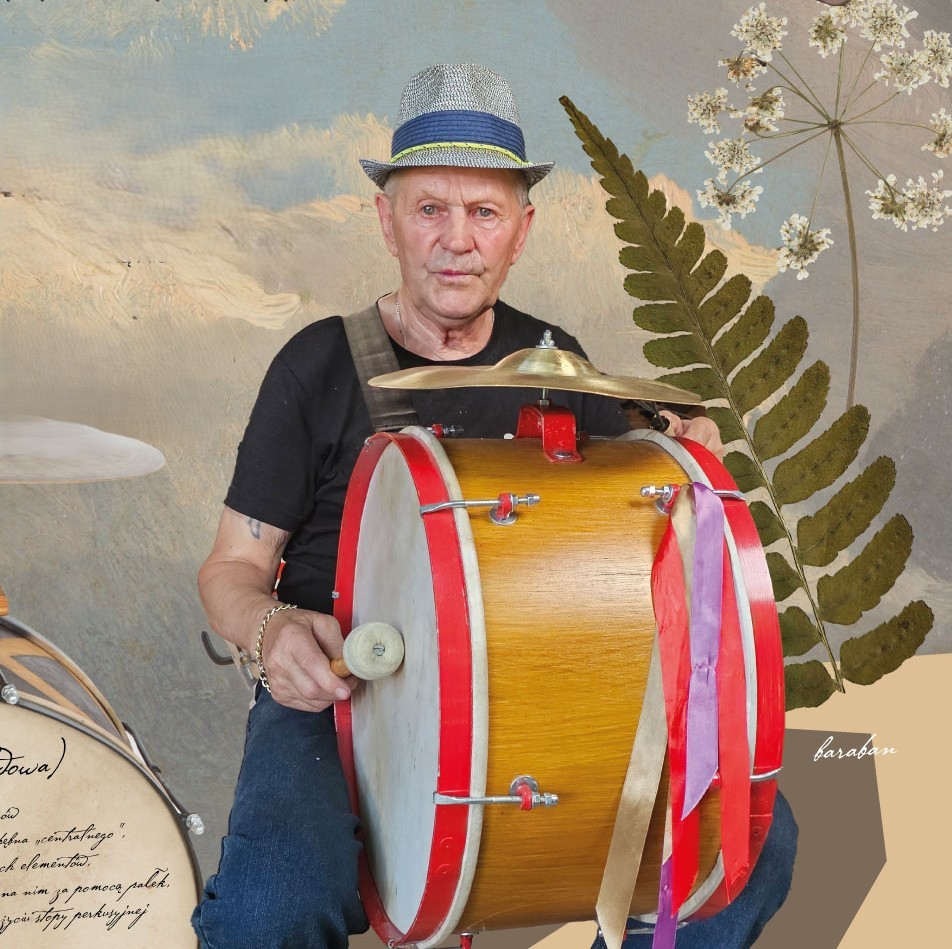
Barbara Plizga
- Medynia Głogowska / Pogwizdów (Podkarpackie Voivodeship)
A sculptor and ceramic artist, born in 1967 in Łańcut. For more than twenty years she has been creating unique ceramic forms – from sculptures to whistles – all distinguished by her expressive style and meticulous hand finishing. Her journey into ceramics began with her husband, Andrzej Plizga, who introduced her to working with clay. Initially hesitant, she soon embraced the craft wholeheartedly, devoting herself to creating small works of art. Her workshop produces dozens of pieces daily – from lambs, kittens, and angels to colourful beads and bird-shaped whistles. Each piece stands out for its individuality and craftsmanship. Her work demonstrates that genuine passion is born from dedication and the heart poured into the creative process.
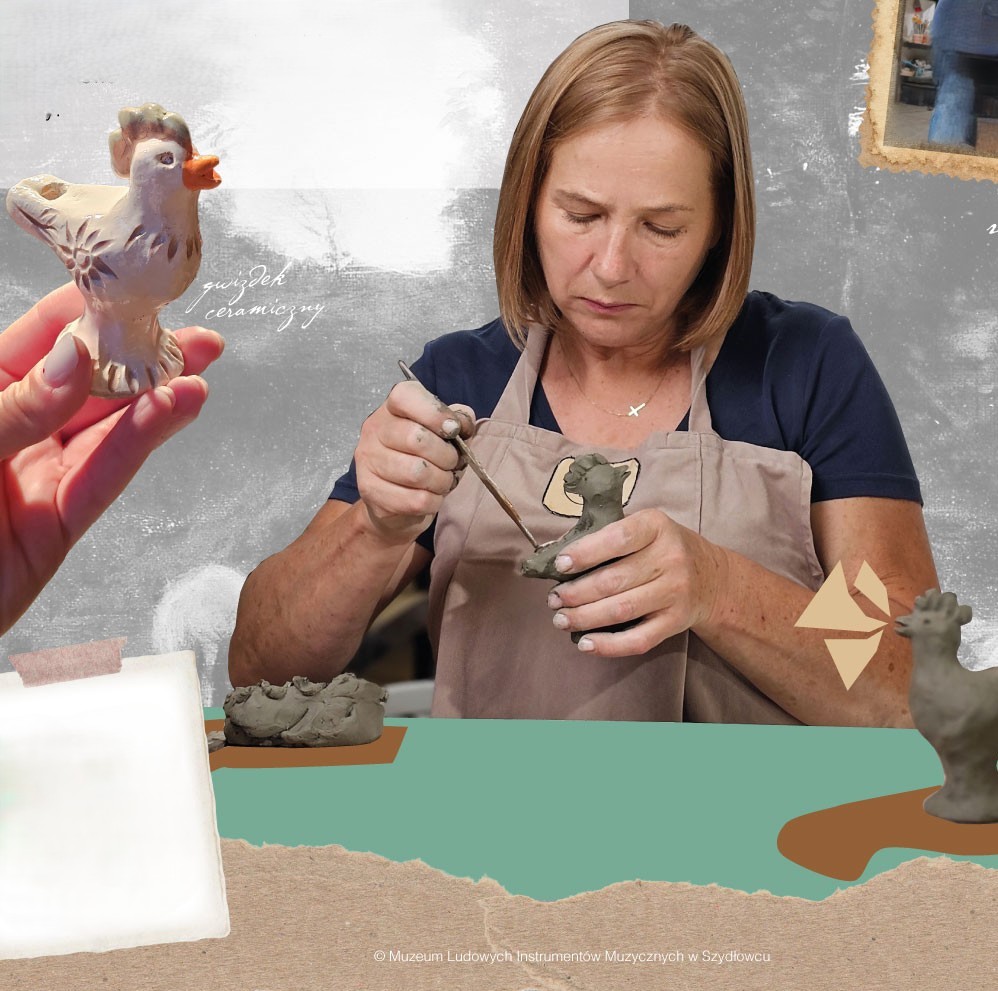
Jan Malisz
- Męcina Mała (Małopolskie Voivodeship)
A musician, multi-instrumentalist, instrument maker and collector, devotee of traditional music, as well as a sculptor, carpenter, and joiner. Born in 1963, he has been immersed in folk music since childhood. He learned his first melodies from his father, Józef Malisz, and his first instrument was the mandolin. From that point, his musical journey has continued to expand, embracing dozens of instruments – both traditional and self-made.
A self-taught instrument maker, his work began with the reconstruction of his father’s old violin. A turning point in his path was his encounter with Stanisław Wyżykowski, who offered valuable guidance on building the hurdy-gurdy.
In his workshop he creates hurdy-gurdies, basses, Biłgoraj sukas, flutes, moraharpas, vielles, and experimental instruments using metal cans as resonating parts which he calls skrzypuszki.
Together with his family, he performs as part of the Malisz Family Band, sharing music handed down through generations. His work bridges craftsmanship with passion, and tradition with an unceasing search for new sounds.
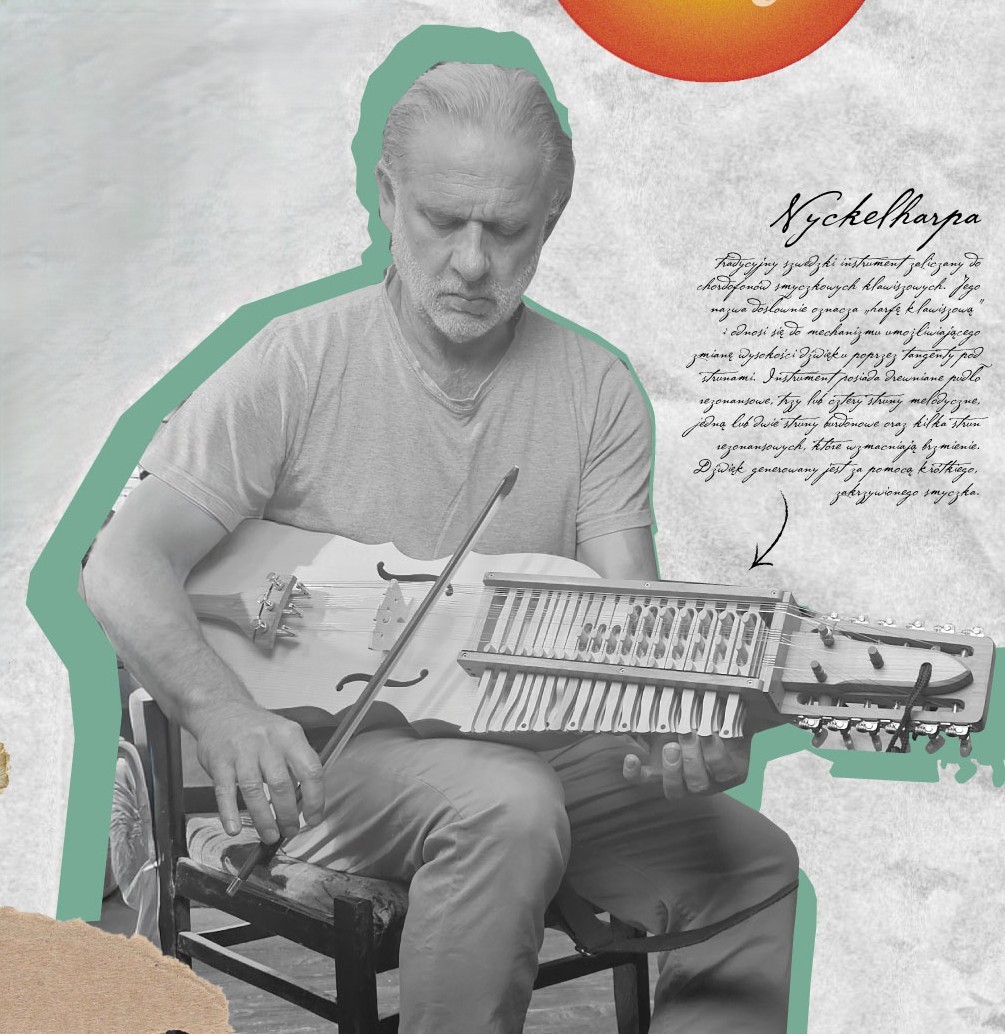
Lucjan Kościółek
- Krasne (Podkarpackie Voivodeship)
A luthier, musician, and hurdy-gurdy player, Lucjan Kościółek is also a dedicated promoter of hurdy-gurdy traditions and the art of luthiery.
Born in 1976 in Rzeszów, he is active in numerous educational and outreach projects, introducing children and young people to historical instruments. His fascination with seeing instruments “from the inside” inspired him to begin building them himself. In his workshop he crafts violins, hurdy-gurdies, citoles, viola da gambas, Płock vielles, and Biłgoraj sukas. He performs with the Early Music Ensemble Vox Angeli and co-founded the Travelling Hurdy-Gurdy University, an initiative devoted to popularising hurdy-gurdy playing in Poland. In 2017, he served as master instructor during the “School of Masters of Folk Instrument Making” workshops organised by the Institute of Music and Dance.
He was a laureate of the 6th National Competition for the Construction of Folk Musical Instruments, receiving recognition in the innovation category for the Płock vielle.

Andrzej Staśkiewicz
- Kadzidło (Mazowieckie Voivodeship)
A sculptor, maker of wooden folk instruments, and musician.
Born in 1954 in Kadzidło, in the Kurpie region. Since 2000, he has been carving wooden sculptures and building traditional folk instruments. He performs in a Kurpie folk band, leads workshops for young people, and showcases instruments he has handcrafted.
Although he initially honed his sculpting skills in art schools, it was only about fifteen years ago that he fully dedicated himself to his passion. His collection features a wide range of reconstructed historical instruments, including the rebec, Płock vielle, pochette, Biłgoraj suka, and moraharpa (keyed fiddle), as well as shepherds’ instruments such as ligawka (Polish wooden folk horn), flutes, and willow-bark trumpets. He also crafts musical tools such as whistles, rattles, kalatalos, and more. A particularly important instrument in his work is the basolia, which today holds a central role in the music of the region.
He was a laureate of the 4th National Competition for the Construction of Folk Musical Instruments, recognised for his ligawka, whistles, and flute.
